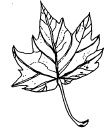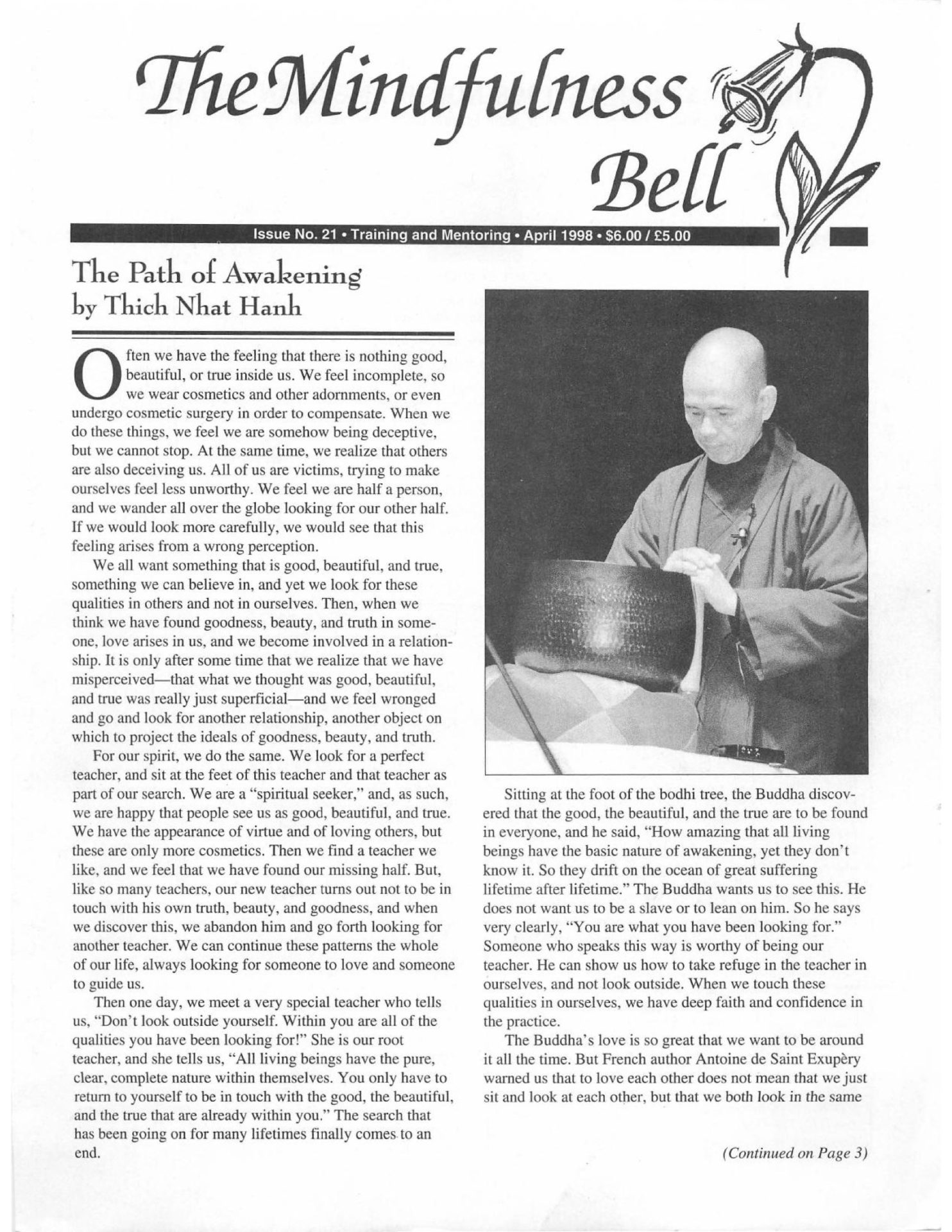By Sister Annabel Laity in April 1998
The young banana plant has two small leaves. They are the first to arrive, and nourish the plant’s early stages. Then, they wither and fall, giving way to larger leaves which allow the tree to develop and bear fruit. The budding practice in Maple Forest Monastery is like those first small leaves. If we succeed in our practice, Maple Forest will blossom and bear fruit. If we take root,
By Sister Annabel Laity in April 1998
The young banana plant has two small leaves. They are the first to arrive, and nourish the plant's early stages. Then, they wither and fall, giving way to larger leaves which allow the tree to develop and bear fruit. The budding practice in Maple Forest Monastery is like those first small leaves. If we succeed in our practice, Maple Forest will blossom and bear fruit. If we take root, Maple Forest will grow into a monastery where monks and nuns live and a Dharma Center where lay practitioners live.
We first residents are ten monks and nuns, living in two borrowed houses and supported by a local lay Sangha. We are awestruck by the exceptional beauty of the countryside near Woodstock, Vermont. We wish to live happily and in harmony in order to be worthy of the natural beauty, our ancestral teachers, and the laypeople who support us. We know that this is the best foundation we can lay for the Buddhist Sangha here.
As much as possible, Maple Forest follows the schedule of Plum Village. Formal daily training begins at 5:30 a.m. and continues through 10:00 p.m. During the day, we train in sitting meditation, reciting the sutras, discussing and studying the novice and bhiksuni precepts and fine manners, working mindfully (mostly housekeeping at this time of year), eating and drinking with full awareness, walking mindfully in the snow (we hope someone will introduce skiing meditation in the future), listening to the teachings of Thich Nhat Hanh recorded a week earlier in Plum Village, and organizing weekly Days of Mindfulness for the local people.
As monks and nuns, we are learning to live as free persons in order to help others. We do our best to live simply and devote ourselves to daily training in the practice of mindfulness. Our training nurtures our abilities to live awake and present to the moment as well as to be happy and to develop the Six Harmonies.
Practicing harmony of the body, we live together and act in harmony with those around us. If someone has not tidied up after themselves, rather than say, "Who left that terrible mess?", we tidy up for them. Practicing harmony of sharing, we share material things as well as experience of the practice. If someone in the community receives clothes and already has enough, she hands the new clothes on to a sister or brother who does not. If someone in the community receives food, he shares it with the whole community.
Practicing harmony of speech, we reflect on the effect of our words before speaking. When correcting a sister or brother, we do not use harsh words. We do not cause division between our sisters and brothers by our speech. Practicing harmony of precepts, we recite our precepts and fine manners regularly. If we see that we have infringed the precepts or fine manners, we repent before the Sangha.
When we see someone else infringe the precepts, we correct them with love and understanding. We know that the precepts and fine manners are a concrete manifestation of mindfulness. We give our whole heart to the practice of mindfulness. Practicing harmony of mind, we think about each other in order to understand each other. When someone is suffering, we think about how we can best help them. Practicing harmony of view, we know that the understanding of one person can never be as complete as the combined understanding of many. We use the collective wisdom of the Sangha, which we call "looking with Sangha eyes." We reach decisions by consensus rather than by majority vote. Practicing the Six Harmonies, we learn to live together as milk mixes with water. If we are a drop of oil, we will find it difficult to mix with water, but if we are milk, we will become one with the water. It means that your suffering and your happiness are my suffering and my happiness.
Such warmth and joy as this, generated by the practice, bear witness to the fact that the heart of Thay Nhat Hanh's teaching is beating in North America. For this the monks and nuns have to thank the core and extended Order of Interbeing, whose members come and give wholehearted spiritual support.
Maple Forest is particularly fortunate to have many children participate in the weekend Dharma talks, walking meditation, and mindful meals. The children are practicing well: listening to the bell, being mindful of the words "yes" and "thank you" as they walk, eating in silence for fifteen minutes, and listening to the teachings. They play indoors and also out in the snow, and bring much happiness and freshness to everyone. Many children are interested in the monastic life, and we answer their questions.
The monks and nuns want to be available to lead the Buddhist practice for laypeople several times a week. In the future, we will lead retreats in the Dharma Center. In the nearby town of Woodstock is the Mindfulness Practice Center. The monks and nuns will sometimes give nonsectarian teachings on mindfulness here. Presently we are in touch with the Correction Services to find out how monks, nuns, and laypeople from this Sangha can help in the correction facilities in Vermont.

We hope that before too long you can join us for walking meditation in this beautiful part of the world. Whenever we walk in the sunshine on the snow-covered hill near our home, we feel we are in a pure land. The forest in which the nuns' house is found is very still. Each pine tree stands straight and tall, holding the snow on its branches without complaint. When the snow melts and the sun shines, the air is fragrant with pine. We hope that all practitioners, monastic and lay, who come to Maple Forest will grow strong in the practice of being themselves as these trees practice being trees.
Illustration by Anneke Brinkerink.


